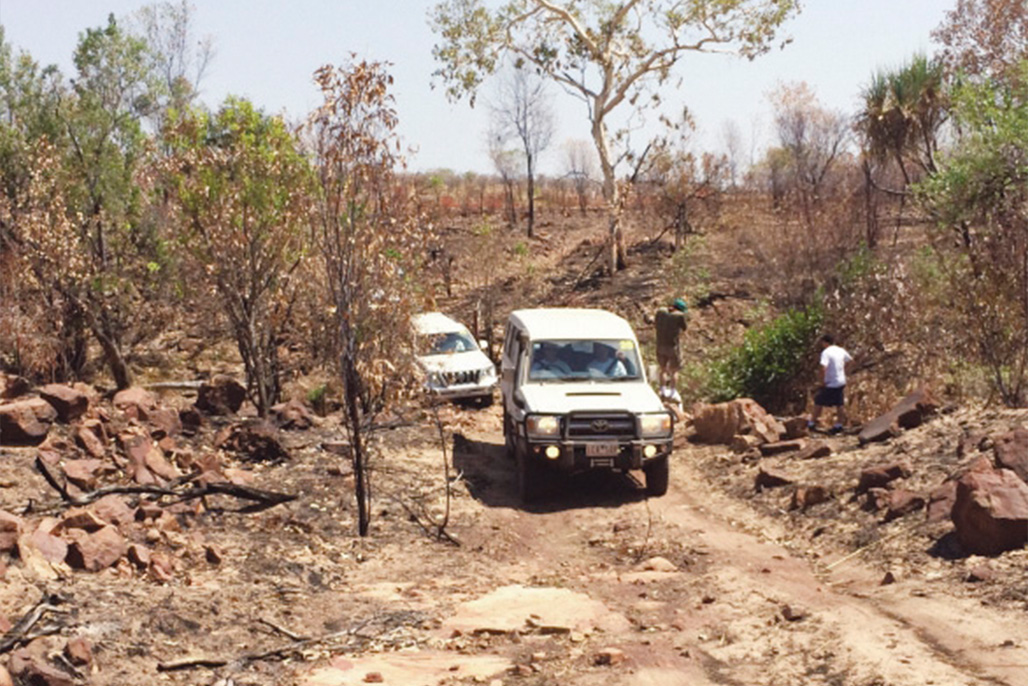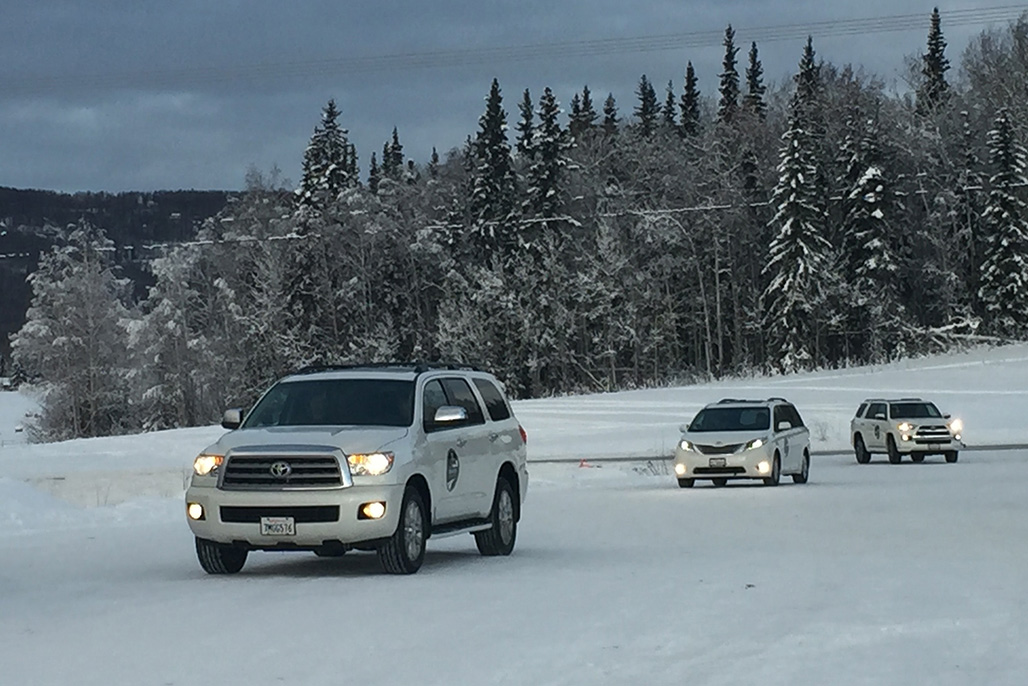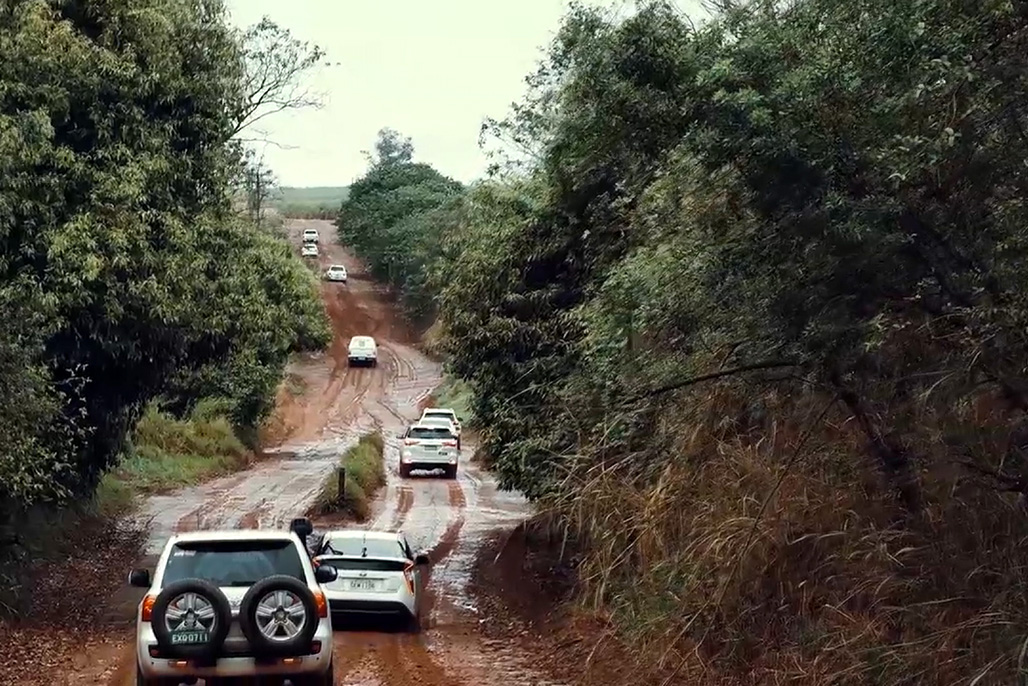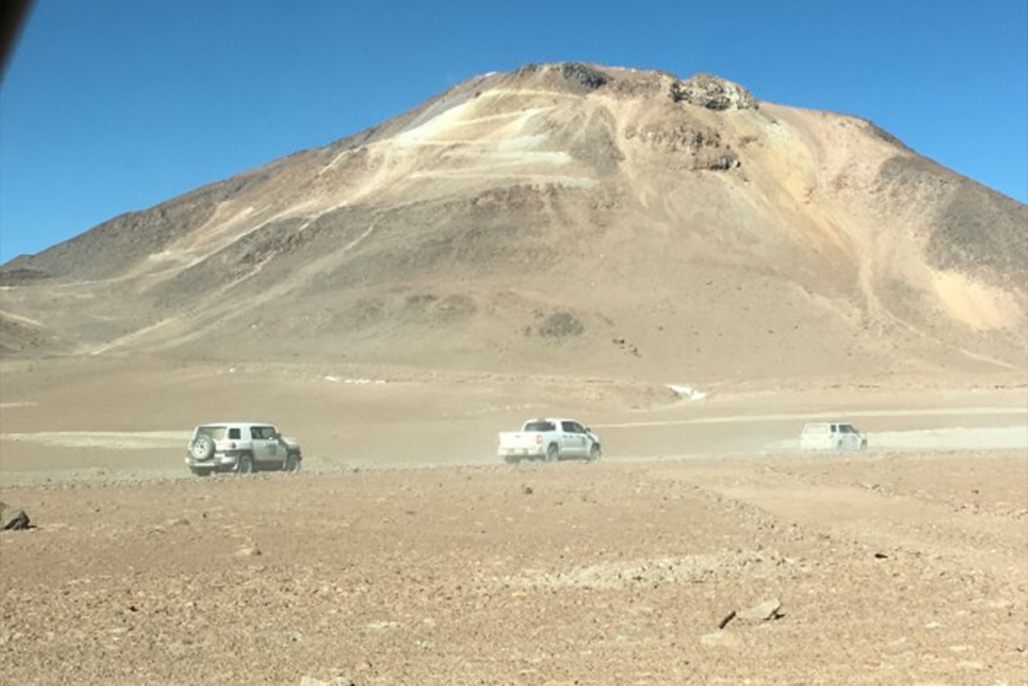In Pursuit of “Making Ever-better Cars,” Toyota Kicks Off Fourth Leg of the Five Continents Drive Project in Europe
Toyota City, Japan, August 23, 2017 – In late August, Toyota will kick off the fourth leg of the Five Continents Drive Project in Europe, the third continent in the project. Following Australia in 2014 and the Americas* in 2015 and 2016, the European leg will cover a total of 19,000 kilometers.
As part of TOYOTA GAZOO Racing's activities aimed at developing human resources capable of making ever-better cars, the Five Continents Drive Project provides an opportunity for Toyota employees from Japan and local affiliates to take the wheel and experience first-hand driving on the actual roads used daily by our customers. This leg of the project, now in its fourth year, will take place in Europe, the birthplace of car culture, where customers have high expectations for cars. In addition to discovering insights that will help Toyota improve the cars it makes, the aim of the project is to strengthen the collection and analysis of driving data that cannot be obtained on a test track, and ultimately, to contribute to Toyota’s efforts to make ever-better cars.
Moving forward, Toyota will continue its activities in the run-up to 2020, which will be a significant milestone for the company, the year of the Olympic and Paralympic Games in Tokyo.
*For the purpose of the Five Continents Drive Project, North America and Latin America are categorized as one continent (“the Americas”).
2017 Driving Project in Europe
| Duration/Route | Summer session |
A period of about two months starting in late August |
|---|---|---|
|
Start: Toyota Caetano, Portugal (Toyota’s first European production base) Finish: Toyota Motor Europe NV/SA, Belgium |
||
| Winter session |
A period of about one month starting in late November | |
|
Start: Copenhagen, Denmark Finish: Tommi Mäkinen Racing, Finland |
||
| Vehicles involved | Mainly hybrid models including the European-produced Yaris HV and C-HR HV. | |
| Team members | A varied team of about 130 members, including Toyota employees and employees from European affiliates. Group companies will also participate in the project this year. | |
| Data collection | Vehicle and route data will be collected using data loggers. | |
| Characteristics of Europe | Driving: High-speed driving (including on general roads), traveling long distances | |
| Market: Highly competitive market with strict environmental regulations, demanding customers, and rigorous safety standards, consisting mainly of the compact vehicle segment | ||
| Diversity: 53 countries, 30 languages, as well as differences in traffic regulations, culture, religion, ethnicity, currencies, and economic circumstances | ||
Message from Akio Toyoda (Toyota Motor Corporation President)
“Ever since I became president, I’ve been telling everyone at Toyota “Let's make ever-better cars!” What led to this were the words of the late Hiromu Naruse, a master Toyota test driver and my driving instructor, who taught me over and over again the meaning of “roads make cars,” and to my continuous efforts to put those words into practice.
After trying to figure out how I, as a non-engineer, could apply the principle of “roads make cars” in making Toyota’s “ever-better cars,” I reached the conclusion that the only way to do this is by taking the wheel, having conversations with various types of vehicles, and experiencing numerous “roads” (or environments).
Through this I can sense how engineers feel and speak their language so that we can deliberate with them right until the very last moments of development. This is my way of bringing Toyota closer to our ideal of making “ever-better cars.”
With this mindset, I have participated alongside Toyota employees in the 24 Hours Nürburgring endurance race. In preparation for the race, our drivers, mechanics, and engineers converge and work together on one car, paying close attention to any potential issues spotted or even felt by the drivers in their test runs. The team works right up until the very end to ensure the drivers have the best possible vehicle and driving experience, allowing them to go full speed at full strength, with confidence.
This is the case not only in the development stage, but also when problems occur during a race. When a problem arises, our team has to come up with a solution in a short amount of time and fix the issue with whatever tools may be available so that the driver can get safely back to the always-dangerous race. I've watched many of our members learn and grow through the repetition of this process during races.
“Roads make cars” could be rephrased as “roads build people, and people build cars.” However, there are only a limited number of employees who are able to participate in experiences like the Nürburgring endurance race. As an opportunity to offer more of our employees the experience of how “roads make cars,” we started the Five Continents Drive Project.
Race cars that drive well can only become the formidable vehicles they are by being pushed to the limit. The same rule applies to cars that we deliver to our customers.
Our genchi genbutsu (going to the source to get the facts) approach calls for driving cars on the same roads used by customers and exposing cars to regional cultures and climates, effectively honing our sensors. By getting a better picture of the way various customers drive vehicles, we are able to envision the perspective of an actual customer driving on local roads, even while driving on a test track. I believe that our approach ultimately leads to making ever-better cars. We simply cannot make ever-better cars solely on a test track.
Having heard from team members returning from the Australian, North American, and Latin American legs also mention this, I feel sure that they came back with a heightened spirit as professionals driven to make ever-better cars.
Spending time away from their lives in Japan to live among people of different cultures, and driving together during grueling days, often in harsh natural environments, has enabled them to grow as human beings. As a result, I believe that they have become truly dependable employees.
This year, we will send 130 team members off to take on the challenge of the Five Continents Drive Project in Europe. Europe is the birthplace of the automobile, and the land where our numerous European carmaker senpai (mentors) have long been building their car-making strengths. I have high expectations for our team members to return having learned many things from driving on those roads.
Over the past three years, our team members have driven on all kinds of roads as part of this project, and I, too, would like to continue working together with them to further Toyota’s commitment to making ever-better cars.”
Akio Toyoda, President, Toyota Motor Corporation

2014 driving project in Australia (Western Australia)

2015 driving project in North America (Alaska)
Reference: Past legs of the project
| Year | Continent | Distance | No. of days | Characteristics |
|---|---|---|---|---|
| 2014 | Australia | ~20,000 km | 72 days | In a continent said to possess all of the world's diverse road types, drivers faced harsh conditions including deserts and rough roads. |
| 2015 | The Americas (North America) |
~28,000 km | 109 days | Consisting of a Summer session and a Winter session, the conditions ranged from the severe heat of Death Valley to the harsh cold of Alaska and Canada. |
| 2016 | The Americas (Latin America) |
~20,000 km | 84 days | Conditions included muddy roads in the tropics, mountainous roads at an altitude of 5,640 meters*, and sand dunes. |
*University of Tokyo Atacama Observatory (TAO):
http://www.ioa.s.u-tokyo.ac.jp/TAO/news/20161012/index.html



